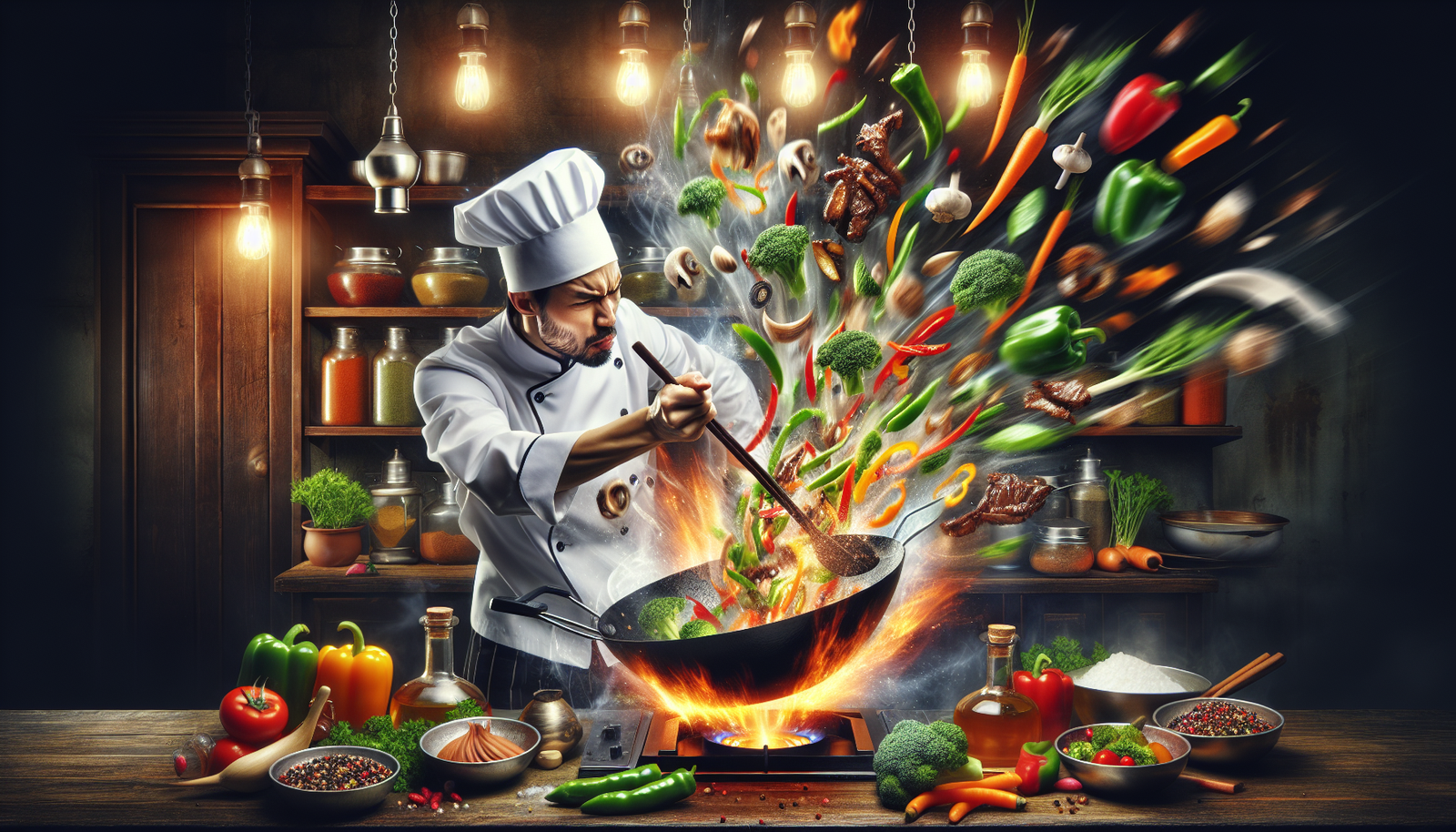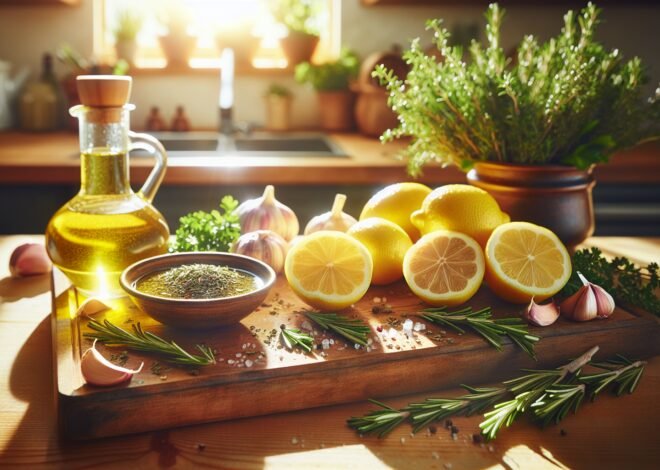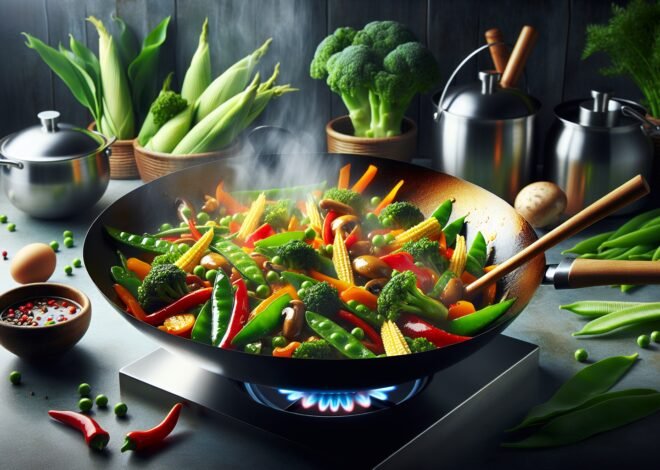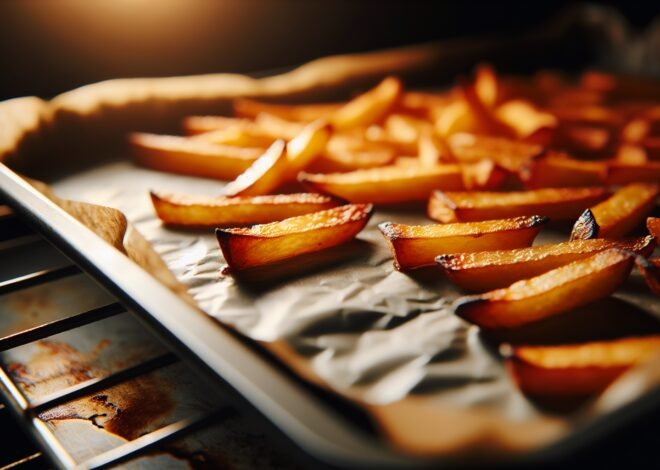
Top 20 Stir-Frying Tips to Master High-Heat Cooking
Stir-frying tips are essential to mastering the art of high-heat cooking. Known for its quick preparation and ability to retain the vibrant colors and nutrients of ingredients, stir-frying transforms ordinary meals into culinary delights. With so many techniques, even seasoned cooks can discover new ways to refine their skills. This guide shares the top 20 stir-frying tips, from choosing the right oil to timing ingredient additions, ensuring each dish achieves the perfect balance of flavor and texture. Dive in to uncover how you can elevate your stir-frying game and impress with restaurant-quality meals at home.
Choosing the Right Equipment for Stir-Frying
Stir-frying is an art, and like any artist, the right tools make all the difference. The right equipment can transform a simple dish into a culinary masterpiece. This section will guide you through selecting essential gear that ensures your stir-fries are cooked to perfection every time.
Selecting the Best Wok for High-Heat Cooking
The wok is the quintessential tool in stir-frying. Its unique shape and design allow for even cooking and heat distribution. When choosing a wok, consider materials like carbon steel or cast iron. These materials heat quickly and maintain high temperatures, essential for achieving that perfect sear. A flat-bottomed wok is ideal for modern stovetops, providing stability and even contact with the heat source.
Look for a wok with a sturdy handle for easy maneuvering. A wooden or heat-resistant handle will protect your hands during intense cooking sessions. The right size is also crucial; a 12 to 14-inch wok is versatile enough for small to medium servings.
Essential Utensils for Perfect Stir-Fry Techniques
Utensils play a vital role in executing stir-fry techniques. A good spatula, preferably one with a curved edge, will help you toss and turn ingredients with ease. Choose materials like wood or silicone to avoid scratching the wok’s surface. A ladle can be useful for adding liquids like sauces or stocks precisely.
Tongs are perfect for flipping meats and vegetables, ensuring even cooking. A slotted spoon is handy for removing ingredients without excess oil or liquid. Investing in these utensils will streamline your cooking process and enhance your stir-fry experience.
Importance of a High-Quality Heat Source
The heat source you use can dramatically affect the outcome of your stir-fry. High heat is essential for achieving the desired texture and flavor. Gas stoves are preferred due to their ability to provide direct, intense heat. However, if you’re using an electric stove, consider a wok ring to elevate the wok for better heat circulation.
For outdoor cooking, portable propane burners can offer high heat and flexibility. Ensure your heat source allows for quick adjustments, enabling you to control the cooking process precisely. A quality heat source ensures your ingredients remain crisp and flavorful, enhancing the overall dish.
Preparing Ingredients for Optimal Stir-Fry Results
The magic of stir-frying lies in the preparation. How you prepare your ingredients can make or break your dish. In this section, discover essential tips to ensure your ingredients are ready to shine, from cutting techniques to marinating and prepping.
The Importance of Cutting Ingredients Uniformly
Uniform cutting is crucial for even cooking. When ingredients are cut to the same size, they cook at the same rate, preventing some pieces from overcooking while others remain raw. Use a sharp knife and cutting board for precise cuts.
Consider slicing proteins and vegetables into thin strips or bite-sized pieces. This not only speeds up cooking time but also enhances the dish’s texture and presentation. Mastering knife skills will elevate your stir-fry game to new heights.
How to Effectively Marinate Meats for Stir-Frying
Marinating meats infuses flavor and tenderness. A simple marinade can transform your protein, making it the star of the dish. Start with a base of soy sauce, ginger, and garlic for a classic taste. Add a bit of cornstarch to help the marinade adhere to the meat and create a silky texture.
Allow meats to marinate for at least 15 minutes to an hour. This will ensure the flavors penetrate deeply, resulting in a more flavorful dish. Remember to pat dry the meat before cooking to prevent excess moisture from affecting the stir-fry’s texture.
Prepping Vegetables for Maximum Texture
Vegetables bring color, crunch, and nutrition to your stir-fry. Prepping them correctly is key to maintaining their vibrant texture. Rinse vegetables thoroughly to remove any dirt, then pat them dry to prevent excess water during cooking.
Consider blanching tougher vegetables like broccoli and carrots before stir-frying. This step softens their texture slightly, allowing them to cook quickly and evenly. Keep softer vegetables like bell peppers and mushrooms aside to add later, ensuring they remain crisp and fresh.
Mastering Stir-Fry Cooking Techniques
With the right equipment and prepared ingredients, it’s time to master the techniques that bring everything together. This section delves into the essential skills needed to create a harmonious and flavorful stir-fry, from timing to flavor balancing.
Timing and Order of Ingredient Addition
The order and timing of ingredient addition are crucial for a successful stir-fry. Start with ingredients that take longer to cook, such as meats or root vegetables. As these begin to brown, add quicker-cooking items like leafy greens or tender vegetables.
Spacing out additions allows each component to cook perfectly, resulting in a cohesive dish. Pay attention to cues like color change and aroma to adjust the timing as needed. Practicing this technique ensures that every bite is cooked to perfection.
Controlling Heat Levels for Even Cooking
Stir-frying requires precise heat control. Begin with high heat to sear and caramelize ingredients quickly. This creates a flavorful crust while retaining moisture inside. Adjust the heat as needed to prevent burning or undercooking.
Medium heat can be used to simmer sauces and finish cooking without overcooking sensitive ingredients. Use your senses to gauge heat levels – if the oil smokes excessively, reduce the heat to maintain control and flavor integrity.
Balancing Flavors with Sauces and Seasonings
Sauces and seasonings are the finishing touches that bring your stir-fry to life. Balance is key – too much of one flavor can overpower the dish. Combine salty, sweet, sour, and spicy elements for a well-rounded taste.
Soy sauce, oyster sauce, and rice vinegar are classic choices for depth and umami. Fresh herbs like cilantro and spices like chili add brightness and heat. Taste as you go, adjusting seasonings to achieve the perfect balance for your personal palate.
Conclusion
Stir-frying involves cooking small, uniform pieces of food quickly at high heat. It’s important to use a wok or a large, flat-bottomed pan for even heat distribution. Preparing all ingredients before heating the pan ensures a smooth cooking process. High smoke point oils, like peanut or canola, are ideal for stir-frying. Consistently stirring the ingredients helps achieve even cooking and prevents sticking.
FAQ
What are the best vegetables for stir-frying for a quick meal?
Some top choices include bell peppers, broccoli, and snap peas. These vegetables retain their crunch and color and cook quickly. Mushrooms and carrots also add a depth of flavor and texture.
How do I prevent meat from sticking when stir-frying on a high heat?
Ensure your pan or wok is hot before adding meat. A thin layer of oil also prevents sticking. Cutting meat into even, small pieces promotes quick and even cooking.
Which oils are suitable for achieving perfect stir-fry every time?
Opt for oils with high smoke points like canola, peanut, or vegetable oil. These oils maintain stability at high temperatures, keeping flavors intact.
How can I enhance the flavors of my stir-fry using sauces and seasonings?
Incorporate soy sauce, oyster sauce, or hoisin sauce for umami-rich flavors. Fresh ginger, garlic, and chili add a kick, while sesame oil finishes dishes with a nutty aroma.
What cooking equipment is most effective for stir-frying at home?
A sturdy wok or a non-stick skillet is ideal. These allow for consistent high heat and easy tossing of ingredients. Use a spatula or wooden spoon for stirring.
What are the common mistakes to avoid for a healthier stir-fry?
Avoid overcrowding the pan, as it leads to steaming instead of frying. Use minimal oil and choose lean meats. Incorporate a variety of colorful vegetables for a nutrient-rich meal.











